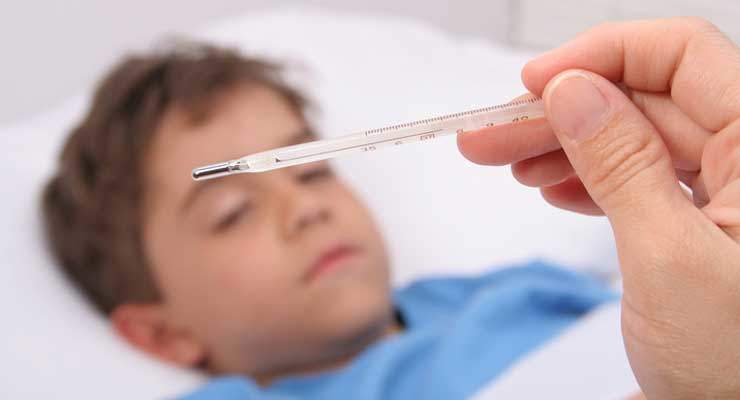Constant fever in children is frightening for both the child and her parents. In most cases, a fever signifies an underlying, temporary infection caused by a virus or bacteria. Once the infection clears up, the fever disappears. In a few rare cases, a fever will return again and again, with no apparent cause. This is called “chronic” or “periodic” fever syndrome. Such fevers are also called “fevers of undetermined origin,” or FUO for short.
Definition
Three criteria must be met to obtain a constant fever diagnosis in a child, according to eMedicine. First, the fever must be greater than 101 F on more than one occasion. The fever must come and go or last for more than three weeks, and there must be a failure to determine the cause after at least a week of investigation. In addition, the investigation must be done on an in-patient basis.
Causes
Periodic fever syndrome can be caused by a number of things. An ongoing virus or bacterial infection can cause an ongoing fever, as can inflammation of connective tissue, such as seen in juvenile rheumatoid arthritis. Genetic diseases can also cause constant fevers. In such cases, the child usually gets better for a brief period of time before succumbing to a fever again, according to the Cleveland Clinic. For 5 to 15 percent of children who suffer from constant fevers, the exact cause is never found.
Diagnosis
Diagnosis is based on the child’s history of fevers as told by the parents. In addition, the doctor will probably order blood tests, X-rays and perhaps a urine test as well. These tests will help rule out bacterial, viral, fungal, endocrine disorders and neoplasms (cancers and tumors).
Treatment
Constant fevers are impossible to prevent or treat until the underlying cause is diagnosed. Even then, it may still be impossible to prevent them, such as in the case of chronic genetic conditions. In some cases, the child will outgrow the episodes of fever. In fact, children who suffer from periodic fever, aphthous stomatitis, pharyngitis, and cervical adenitis (PFAPA) usually outgrow the condition by age 5, according to Vanderbilt University Medical Center. Until then, the fevers should be treated with cold compresses and acetaminophen or ibuprofen. Never give a child aspirin, as this can lead to Reye’s syndrome, a rare but dangerous disease. Constant fevers caused by a virus, bacterial or fungal disease will necessitate treatment specific to the cause.
Warning
Call a doctor or seek medical attention right away if your child has a fever of more than 105 F (over 102 F if the child is less than 1 year old). In addition, see a doctor right away if your child has a fever and a rash, unexplained bruises, or has pain during urination. Symptoms, such as a stiff neck coupled with a headache, difficulty breathing, mental confusion or an inability to function, necessitate an immediate call to 911.
Watch below for more Child Care Tips for Fever with Dr. Sears:






